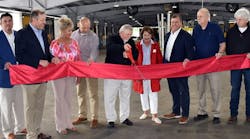The first public battle over congestion pricing was fought to a draw in New York City last month. It may have been a local event, but anyone with a stake in the trucking industry should pay close attention to the way it played out.
The city's mayor, Michael Bloomberg, who has undeclared but unmistakable presidential aspirations, had a $500-million club in his arsenal. That's the amount he said New York would lose in federal grants if it didn't approve an $8 to $21 fee for vehicles entering the center of the city in Manhattan. And as someone who made his billions in the media business, he knew just how to use that club in the local press.
Those opponents were mostly a faceless lot of state legislators from the surrounding area. Their commuting constituents, the state legislators say, would bear the brunt any congestion charge. What the legislators lacked in media savvy, they countered with votes. Without their approval, the U.S. DOT said it would send the grant money to some other less contentious recipient.
In the end, all three parties — the mayor, the legislators and the DOT — blinked.
The mayor said that July 16 was set by DOT as a drop-dead deadline for the approval. The day came and went without a vote.
Two days later, the state senate agreed to create a commission to study the issue and submit its own plan by next January. The bill that passed stipulated that no congestion fees could be levied without its approval.
Finally, DOT indicated that its deadline really wasn't so inflexible after all, and that N.Y.C. was still in the running for the grant.
So what does all this political wrangling have to do with trucking? Well, trucks would certainly be hit with a fee to enter the congestion area, most likely at the highest $21 level. But even if you never plan to send trucks closer to midtown Manhattan than the banks of the Mississippi, there's an important message in all the rhetoric generated by the mayor and his opponents.
The mayor holds — rightly in my opinion — that something has to be done to tame urban congestion and that a fee is the most equitable way to ration the limited roadway capacity available.
Those on the other side of the question worry about the impact of any fee on commuters and say we should consider alternatives. And that's where things get dicey. The alternatives I heard mentioned came down heavily on limiting or eliminating trucks during the day.
Worse, though, was that neither side seems to see beyond passenger vehicles. There was no indication that either group understands that while commuters have many viable public transit options in New York, there is no other way to get the freight or services trucks deliver into the business district. And without truck-borne freight or services, the city's economic life comes to a standstill.
New York is setting itself up as the model for urban congestion relief with whatever program it puts in place. Trucking needs to get in front of that last-minute committee to make sure everyone understands the economic necessity of truck access and the potential impacts of their various pet plans. This is far more than a local issue. Unless you're willing to live with congestion plans devised solely for the benefit of private vehicles, there's no ducking this fight.
E-mail: [email protected]
Web site: fleetowner.com


